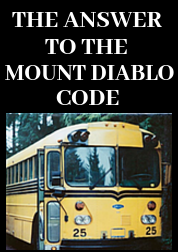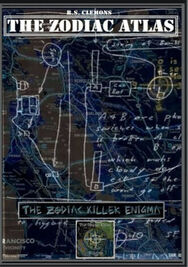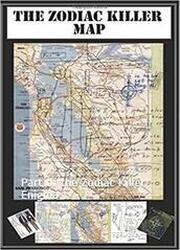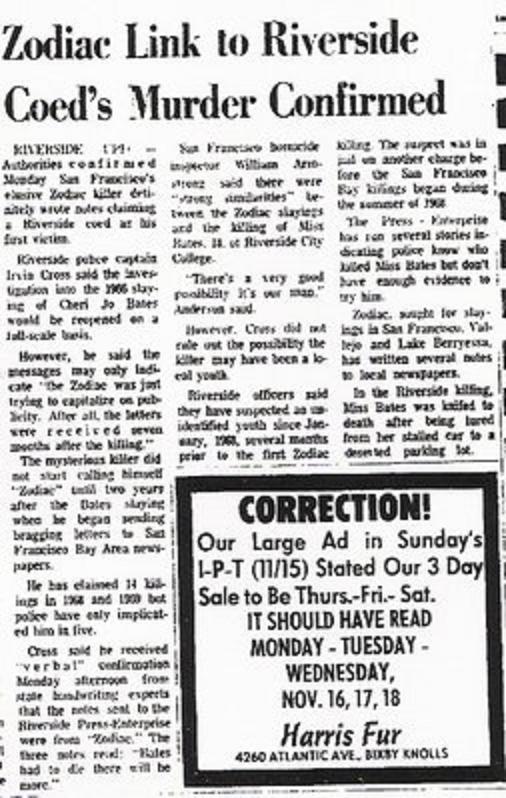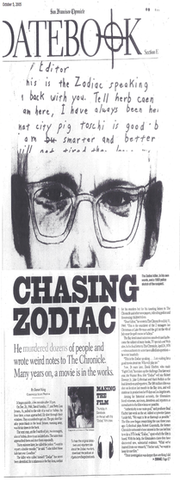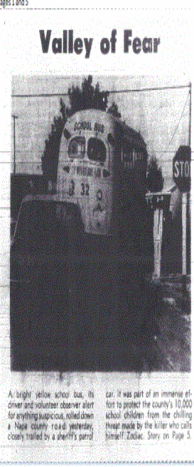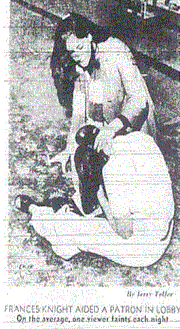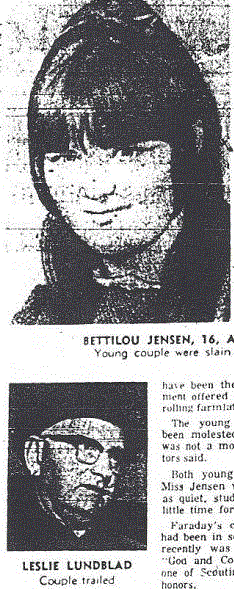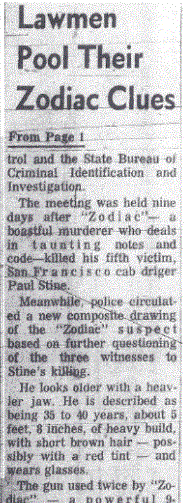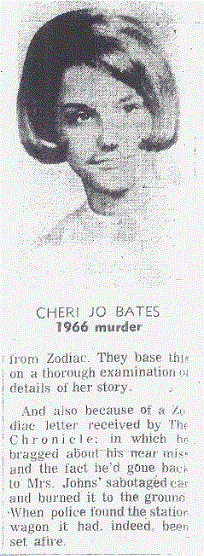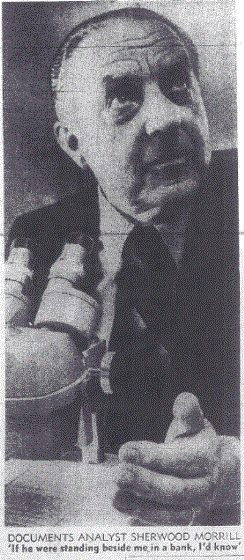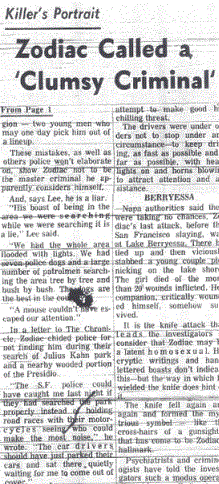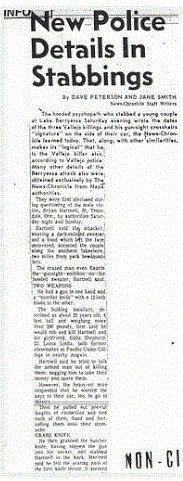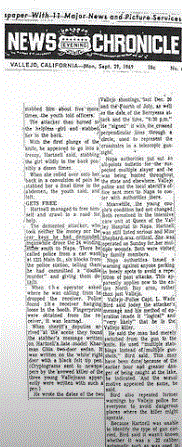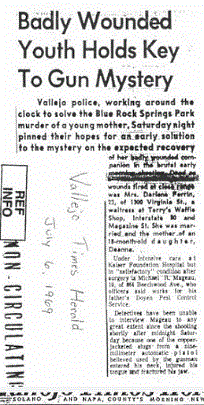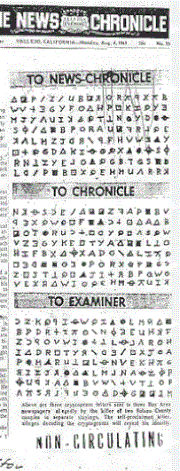This theory relies entirely on the transcription of the message given by Zodiac being written and recorded correctly, despite the fact that police dispatcher Nancy Slover and the Zodiac Killer were talking over each other for part of the message. The police report clearly stated "Writer received call from male subject who did not identify himself. Substance of statement was as follows". The 'substance of statement' reference, indicates that this is not necessarily a verbatim transcription of the spoken message, just the overall substance of the call. The above theory also relies on these locations being predetermined to create the necessary radian angles, and supposes that the killer already had 'radians' in his mind one year in advance of his letter proclaiming the use of such a term. The killer has once again been elevated to a master criminal, creating a labyrinth of puzzles from the terrain of northern California. This is the truth - or there is a much simpler and far more mundane answer.
The idea that the Zodiac Killer was just a ruthless killer scouring the Bay Area for victims using 'hit and miss' tactics, isn't half as appealing as the Moriarty style puzzle merchant he has metamorphosed into in recent years.
What is the likelihood that a killer calling the Vallejo Police Department from a payphone near the police station, was directing the police to the crime scene from their location, rather than creating an elaborate puzzle from a predetermined position along Columbus Parkway to manufacture radian angles? This is for you to decide.
Thomas Horan, author of 'The Great Zodiac Killer Hoax of 1969', admits that the Nancy Slover police report statement of the message is not a verbatim transcription, but goes on to say "Blue Rock Springs is not one mile east of Vallejo Police Department." Despite this, he then uses the transcription to identify a fire station one mile west of the crime scene in his following hypothesis. Both theories rely on the wording and context of the message having been recorded exactly as it was spoken by the killer. The crime scene is neither 'one mile east' of the fire station or St John's Mine Road. A significant portion of the journey would be traveling closer to south than east. At best (as the crow flies), southeast would be the more accurate determination.
Blue Rock Springs was neither 1 mile east of where he called, nor a mile east of the junction of Springs Road and Columbus Parkway. It is north of Springs Road by about 1 mile and 3 miles away from where he had called. Instead of simply saying the name of the park, which would tell all and sundry the location, The Zodiac gives instructions and doesn’t really have a grasp on distance and direction. He didn’t stalk his ground much at all. Nor was he in a state to notice the sign. He could not have been a Vallejoan."
This statement makes the assumption that Nancy Slover recalled and recorded the spoken message of Zodiac 100% correct, while just assuming that Zodiac was incorrect with his payphone message. It doesn't consider the possibility that Zodiac was 100% correct and Nancy Slover recalled and recorded the message incorrectly. This same bias was not applied to either party at Presidio Heights, regarding the incorrect negro male adult description given to responding personnel. We will show later that the message by Zodiac was in all likelihood correct - and Nancy Slover also got the wording of the message correct, but with one crucial mistake. Reading into the message and claiming Zodiac was feigning ignorance by only mentioning the word 'park' is a stretch, and again the same argument could be applied to "The S.F. Police could have caught me last night if they had searched the park properly". Using the word 'park' is not proof of Zodiac knowing the area or not.
A Mexican-American student who noticed Cheri Jo Bates close to opening time, stated "he knew Cheri Jo Bates and had noticed her in the library the night in question. He said he saw the girl "writing something with a ball point pen in her blue spiral school notebook." The boy told us he was outside about 5:30 pm, waiting for the library to open at 6:00 pm, and it was then he saw the girl". This statement is confusing, as it can be read in two different ways - did he see Cheri at 5:30 pm or 6:00 pm.
Let us consider the three teenagers at the corner of Washington and Cherry Streets, and assume they had a direct hotline to Officer Armond Pelissetti one mile west on Washington Street. They are viewing Zodiac heading up Cherry Street, so they call Officer Pelissetti and state "If you go one mile east, on Cherry Street you will see Zodiac." In the second instance they call Officer Pelissetti and state "If you go one mile east on Cherry Street you will see Zodiac." Both statements are composed of the same words, but mean two different things entirely. The only difference is intonation or the use of a slight pause or break, making the first statement correct, while the other giving the impression of directional unawareness.
Applied to the Blue Rock Springs call, we go from "If you will go one mile east on Columbus Parkway to the public park, you will find the kids in a brown car" to "If you will go one mile east. On Columbus Parkway to the public park, you will find the kids in a brown car." The wording hasn't changed, but the meaning of the payphone call has changed entirely. The Zodiac Killer is instructing police to head east to Columbus Parkway, from where they will find the stricken couple at the public park. All this is achieved by a simple full stop. Why would he be directing Vallejo police from a point on Columbus Parkway, when he is ringing the police station near to the payphone? Police traveling from the station along Solano Avenue to Springs Road, would then have to travel 1.34 miles east before reaching Columbus Parkway, on which they would head north towards the crime scene. Do you want this boring answer, or do you want something far more exciting? The choice is yours.
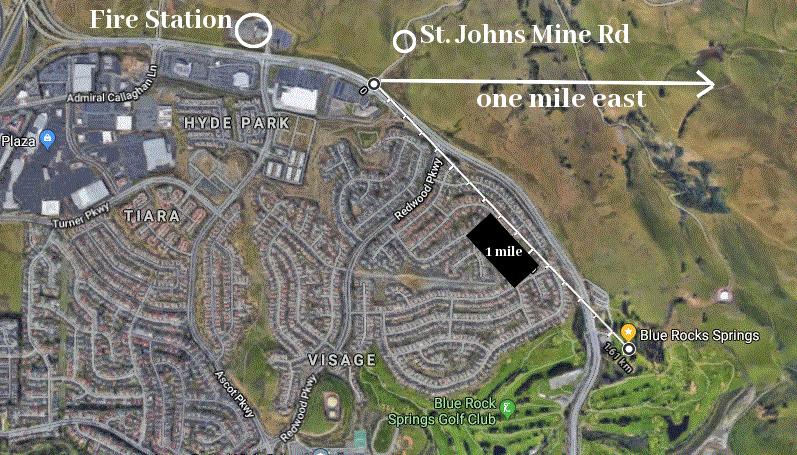

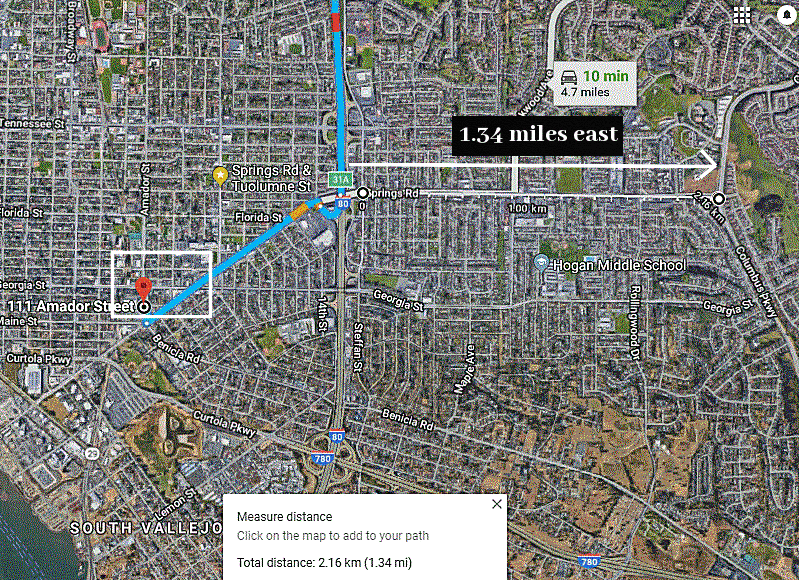




 RSS Feed
RSS Feed

